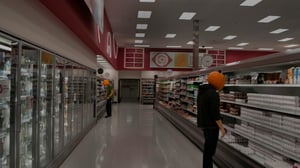Once a modest American import, Halloween has become a firm fixture in the British calendar. From pumpkin carving to fancy-dress parties, the last day of October now marks one of the most commercially vibrant (and occasionally chaotic) nights of the year. But what does Halloween mean for the retail and charity sectors, and what are some of the stranger effects it has on communities?
Retail: A Frightfully Good Business
Halloween is now big business in Britain. Retail spending on Halloween items has grown steadily over the past decade, with UK consumers expected to spend more than £800 million this year on costumes, sweets, decorations, and themed events (according to Statista and the British Retail Consortium).
Supermarkets such as Tesco, Sainsbury’s, and Asda dedicate entire aisles to pumpkins, sweets, and decorations. Even high street shops like Primark and Clintons get in on the act with themed clothing and cards. Online retailers have also seen a surge in sales of costumes and party supplies.
Halloween conveniently fills the gap between the end of the summer sales and the Christmas rush, offering a mid-autumn boost for many retailers, while the American-style enthusiasm might not be to everyone’s taste, it’s hard to ignore its economic impact.
Charities: Doing Good with Ghoulish Flair
Charities have embraced Halloween as a chance to raise funds in creative and engaging ways. Schools and workplaces often hold “dress-up days”, bake sales, or sponsored walks for causes ranging from local hospices to children’s charities.
Charity shops such as Oxfam, Barnardo’s, and British Heart Foundation see a huge spike in footfall as people hunt for affordable costume pieces or vintage clothing for fancy dress. Many have even begun curating special Halloween rails, proving that sustainability can be spooky too.
Campaigns like “Trick or Treat for UNICEF” and local community events also encourage families to give back while celebrating, making Halloween about more than just sugar and scares.
The Mischievous Side: Trick, Treat… or Trouble?
While Halloween is mostly light-hearted fun, the night sometimes brings a small rise in anti-social behaviour. Police forces across the UK often report minor spikes in vandalism, petty theft, and firework misuse around 31 October.
Retailers, too, see an increase in shoplifting, particularly small items like sweets, make-up, and accessories. Many shops respond with extra staff and security, especially in busy town centres.
In some areas, councils and neighbourhood watch groups hand out “No Trick or Treat” posters to protect elderly or vulnerable residents, helping keep the night safe and enjoyable for everyone.
Despite its spooky roots, Halloween has become a surprisingly community-driven celebration in the UK. It encourages creativity, local engagement, and in the case of charity shops, even sustainable shopping.
From all of us at Cybertill, we wish you a frightfully fun and happy Halloween!
